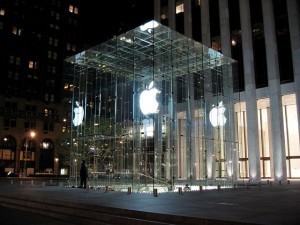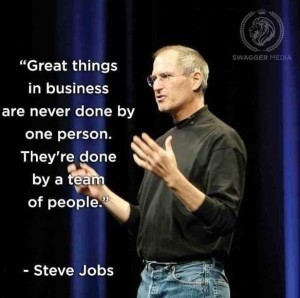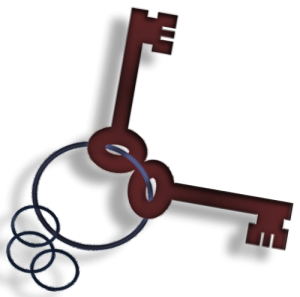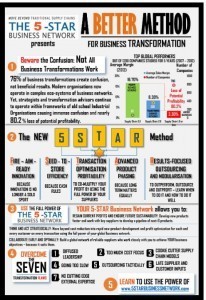Vivek Sood's Blog, page 50
September 15, 2014
Does Your Business Suffer From any of These Five Profit-Killing Confusion
There is no doubt that confusion results in loss of action. Because clarity is the basis of all actions. Clarity gives you confidence and confidence results in action. Imagine a scenario where you need to make a decision and, in order to make a decision you need information, some of which is missing. Generally speaking, you will wait till you have enough information to have clarity and make a decision.
I was recently talking to a CEO whose business suffered from plummeting profits in the last few years. To some extent, the general economic climate had a lot to contribute to this fall of profit. However, as I began analysing the business by interviewing people and then looking at the data that they had produced, I reckoned that there was something much more serious than the business climate which had resulted in shrinking profits.
I saw confusions everywhere in their operations. In my mind, there were at least 5, maybe more, points of confusion which impacted directly on their profit. In other words if these 5 confusions were removed, the company could restore a significant part of its profitability loss, despite the economic downturn. Without revealing the type of the business or even any the specific details of industry it is operating in, here are the 5 things that really mattered. You may be able to use similar thinking in your business.
1. Product Proliferation:

One of the first things I noticed was that the business had too many products. Product proliferation had festered to an extent where the customer was confused when at the point of consideration. Which one to purchase among the sea of products which looked and worked in a very similar manner?
A typical customer did not have time to discern the subtle differences between product A and product B. In my view, if product portfolio was simplified, back to perhaps 3 ranges of premier, mid-level and budget level, the company would be in much better position to actually educate the customers of the differences between these products and then help them pick whichever product suited their needs best.
No doubt that every niche wants a totally customised product and no doubt that market segmentation dictates more and more customised products to every customer need. However, this can go too far, and lead to too much complexity not only in the customer decision making process, but also in the entire supply chain – from purchasing to manufacturing those products, and then selling, transporting and storing them down the supply chain in the channels.
In short, product proliferation led not only to complexities which added a massive cost to the business, but also to confusion in customer’s mind at the time of purchase. It would have been far simpler to just create 3 ranges for the majority of customers, and then maybe 2 or 3 niche products which could then be quite easily communicated.
2. The Buying Process:
The 2 confusion which is related to the first one also resides in a customer’s mind. Companies may not make it easy for the customer to buy, because he doesn’t know which button to press on the Internet or where to call to make an order and what information is needed to make an order.
Subtle changes, subtle differences in this buying process can actually increase the customer’s order rate significantly not just on the B2C market but even in B2B because in the end, it is people who buy things, not computers.
I can give you hundreds of examples of web pages that I have seen, where companies spend a lot of time and resources trying to explain to their potential buyers all the benefits and features of their products with no call to action, with no hint on how to actually buy their product. Sometimes customers really have to hunt around a company’s website to actually be able to buy what they want.
Now it is ironic, as the companies are getting more connected you would assume that it should be easier to find the telephone numbers and get in touch with companies. Many companies now make it harder to get their telephone numbers and they prefer their consumers to communicate via e-mail or other electronic channels on their websites.
I think it is actually counterproductive. By creating this layer of protection which perhaps might save a few dollars, companies take away the customer’s ability to pick up the phone and call them in case of any confusion related to buying their products or using their services. In the end, unless the company is making a product which is only going to be bought by each consumer once in their lifetime, they should be making it easier for the customer to communicate with them using any channel they choose, even while using their product, because a good consumer in that case becomes a customer for a lifetime.
If I know that any time I have problem, I can pick up the phone, talk to somebody who can explain to me the intricacies of using a particular product or clarify any doubts that I might have, I would appreciate that level of attention to my needs and continue to buy the company’s products for a very long time.
You might think that all this lack of accessibility is due to high costs of communication. In most cases, my conclusion was that it was rather a lack of clarity in the process, and customer needs.
3. Confusion about Responsibility:
The 3 confusion which kills the profitability of a business is actually on the opposite side. What does that mean? You would argue that it should be pretty clear that the purchasing manager is responsible for purchasing. But, hold your horses.
In many companies the responsibility for purchasing, procurement, strategic sourcing is divided between the operational business units and, the strategic sourcing department or the purchasing department or the procurement department or whatever they are called. Now this divided responsibility is generally meant to work very well where specialist knowledge of procurement and strategic sourcing departments comes in handy for the operational people when they purchase things, especially direct materials for their business needs.
However, this can also lead to the confusion where both of them feel responsible for certain things (say overseas fact finding missions) and neither of them feels responsible for other ones (say analytical preparation and grunt work). And lot of things can fall through the cracks, as a result.
Very seamless process or seamless working relationship between the operational department and the purchasing/procurement department is critical in order to make sure that the suppliers, the vendors or the outsource service providers do not take advantage of the confusion, and come up with their own de facto processes or their own de facto way of supplying which suits the vender more than it suits the company themselves.
I can give you numerous examples where outsource service providers rely on such a lack of clarity to force their customers down the track they want. A typical IT or logistic service vendor comes immediately to mind. They will try and provide the service in such a way that it suits them: it reduces their costs to the minimum and at the same time imposes additional costs burden on their customers.
In one case, a logistic service provider would bring in their truck to make a pick up at a time where the customer would have to pay extra overtime costs to their own crew, as well as the service provider, because it suited them marginally better.
In another example, one of our clients had a logistic service provider who was taking the client’s products to the warehouse which was halfway across the city – one and a half hour journey each way. Although this provider had a warehouse right next to our client’s operations, which was slightly full, taking the products across town would have generated a lot more revenue. Hence, they decided to store the product one and a half hour journey away from our client’s premises.
When you go and ask the service provider for a reason, usually they will create a half-convincing reason to explain it away. However, a deeper causal analysis generally reveals that it is because of the confusion of responsibility between the operational unit and the purchasing unit.
It is common that purchasing unit did a deal where they signed off on a very low rate with the vendor and the vendor was left in a position where they could decide on the process. As logic follows, they decide on the process which suited them the most so that their revenues were still very high.
4. Confusion in Planning:
The 4 confusion which can kill your profit is the planning confusion, especially between a sales forecast and the operational forecast. The sales staff, within their own department produces their own forecast to answer the question how much they are going to sell.
Obviously, they want to have enough units in stock when customers walk in. And they tend to be fairly optimistic about how much they are going to sell. So sales forecasters are optimistic people and they do not realize that there is a cost for this optimism. Having far too many extra units in the warehouses for months is actually counterproductive. Not only is this a lot of money lying around in the form of working capital on the shelves, it is also a bad signal to the customer himself. Customers look at all these extra inventory and start asking for pricing discounts; they believe that the company is not able to sell as much as they are buying or producing.
On the other hand, the task of operational people is to make forecasts in a more analytical manner, in order to keep the inventories to the minimum. As a result, their forecast tends to be generally lower.
This brings us to the big confusion between the 2 types of forecasts – the sales forecast and the supply chain/operational forecast. Therefore, until there’s a joint forecast which everybody has agreed on, the confusion will continue to kill profitability.
Companies not only need to know what they are going to produce and sell in terms of joint forecast, they also need to know, what they will do in case of extra demand or extra supply. They need to have a plan for the fact that forecasts are never accurate.
I will address the problems with forecasts (there are at least 5 to 10 different problems with forecasts themselves) in a separate blogpost. But in this piece I just want to highlight the inaccuracy of forecasts.
By definition they are going to be wrong, either you are going to forecast too high or too low. What you want to do is to minimise the error, and the consequences of it by having a plan to cope with those consequences.
So if your forecast is too low and the demand is higher than anticipated, how will you meet that extra demand? Will you scramble the business units to produce more? Will you buy it from the market place? Will you be able to hold the demand in the pipeline? Can you tell the customer that you can produce it within a short period of time and supply them? You have to have a plan.
Similarly, in case your forecast is too high and you produce too much, you still need a plan for the disposal of the extra units. It should not be just a fire sale because there is nothing that kills profit more than the fire sales.
5. Confusion between the Financial Budgets and the Operational/Sales Plans:
Now the 5 confusion, maybe the biggest one which kills the profit – but dangerously, also the most covert. Companies budget their business on an annual budgetary cycle where the CFO and his team create the budget once a year. At the same time they are doing the operational planning cycle on a monthly basis: they are running the sales and operations plans on how much they will produce and sell once a month.
This confusion between the financial plan – which is a yearly plan and is rarely updated with the same rigour before the next annual planning cycle, and the operational plan – which is a monthly plan and is updated every month, leads to a situation where the finance function is almost always out of touch with the operational, as well as the sales realities of their business they are trying to control.
Financial controllers are doing their best to control the business with a tool that is totally out of sync with the business operational planning cycle.
Again, examples abound, where due to budgetary constraints, companies have made suboptimal decisions in their purchasing, in their production, in their inventory calculations, in their sales forecasts just to be able to meet the budgets. And this has been not just suboptimal, it can totally kill the profit of the business. The operational team may feel compelled to make these decisions because although profit could be killed, their careers are (not yet) on the line.
I will write a more detailed blog on this 5 confusion to discuss how this disconnect between the annual budgetary planning cycle and monthly operational planning cycle can actually lead to immense profitability decline in the businesses.
It is rather obvious what to do about these confusions once you become aware of them. I will welcome comments on which of these, and any additional confusions you have seen in your business, and how you dealt with them.
“Vivek Sood is the world’s foremost authority on Global Supply Chains which are the commercial engines sitting deep within modern economies and driving them. He is a Chartered Financial Analyst (CFA), and has done courses from Harvard, MIT, and University of London. As the Managing Director of Global Supply Chain Group, he works as a consultant to CEOs and boards of directors of large global corporations, and helps them multiply profits by using the full power of global supply networks. He is also the author of “The 5-STAR Business Network”.
Related articles
SUPPLY CHAIN 3.0 IS REAL, AND HERE NOW (Part 2) (globalscgroup.com)
HOW SUPPLY CHAIN 3.0 CAN LEAD TO TANGIBLE BUSINESS BENEFITS (Part 6 of 6) (globalscgroup.com)
The post Does Your Business Suffer From any of These Five Profit-Killing Confusion appeared first on Global Supply Chain Group.
September 9, 2014
Apple Watch, And The Sign of a Bad Strategiest
Author: Vivek Sood

When I am doing difficult mathematical problems with my son, if he does not yet know the right answer (or the method to solve the problem), generally he will give several answers in the hope that at least one of them might click.
The art of hitting the nail on the head really separates the good carpenters from the bad ones, good mathematicians, and good product designers from the not-so-great ones.
When I was reading the book “Good Strategy, Bad Strategy” by Richard Rumelt, i was struck with the realisation that the bad strategists do exactly that same thing. If they are not sure of which two or three (or four) things will make all the difference in a situation, in general they will recommend a number of solutions (sometimes as many as 20-30) in the hope that at least some of them might click. That is the reason whenever I see an article with a title saying 7,8 or 9 reasons…(also called listicles) – I know it will just be a laundry list of things of marginal importance.
This is how Richard Rumelt describes the difference between good strategy and bad strategy:
“The most basic idea of strategy is the application of strength against weakness. Or, if you prefer, strength applied to the most promising opportunity. The standard modern treatment of strategy has expanded this idea into a rich discussion of potential strengths, today called “advantages.” There are advantages due to being a first mover: scale, scope,
“network effects, reputation, patents, brands, and hundreds more. None of these are logically wrong, and each can be important. Yet this whole midlevel framework misses two huge incredibly important sources of natural strength:
“Having a coherent strategy—one that coordinates policies and actions. A good strategy doesn’t just draw on existing strength; it creates strength through the coherence of its design. Most organizations of any size don’t do this. Rather, they pursue multiple objectives that are unconnected with one another or, worse, that conflict with one
another.
“The creation of new strengths through subtle shifts in viewpoint. An insightful reframing of a competitive situation can create whole new patterns of advantage and weakness. The most powerful strategies arise from such game-changing insights.
It is a great book, and I thoroughly recommend it. In it Richard talks about his meeting with Steve Jobs and his discussion about Apple’s strategy. He was struck by how unique that strategy was especially when compared with all the other tech CEOs that he interviewed.

That brings up to the difficult topic of Apple Watch which was launched today. Being a bit of tech buff I spent several hours trying to understand exactly what does the watch do and looking for those two or three essential things that would make me buy it. Frankly, I wanted to buy it when it comes out on sale.

Yet, I could not find anything that will make me keep all my other watches away. When Apple launched printers – they were clear about 2 or 3 things these printers did which no one else did as well. Itunes allowed people to rip CDs, store music and buy single tracks better than any other product. Ipods allowed listeners the most convenient way of storing a large selection of music. Iphones allowed the best user interface among smart phones (I used to own the best smart phone before Iphone came along – and it was badddd!).
 So, I looked and looked, trying to find those two of three things in the Apple watch that will make all the difference. I am sorry to say that I did not yet find them. If there is something in there, they have carefully hidden it so far. I will take another look when the Apple watch comes out in the market.
So, I looked and looked, trying to find those two of three things in the Apple watch that will make all the difference. I am sorry to say that I did not yet find them. If there is something in there, they have carefully hidden it so far. I will take another look when the Apple watch comes out in the market.
“Vivek Sood is the world’s foremost authority on Global Supply Chains which are the commercial engines sitting deep within modern economies and driving them. He is a Chartered Financial Analyst (CFA), and has done courses from Harvard, MIT, and University of London. As the Managing Director of Global Supply Chain Group, he works as a consultant to CEOs and boards of directors of large global corporations, and helps them multiply profits by using the full power of global supply networks. He is also the author of “The 5-STAR Business Network”.
The post Apple Watch, And The Sign of a Bad Strategiest appeared first on Global Supply Chain Group.
Dear Hackers – Please Do Not Kill the Cloud…
Author: Vivek Sood
There are already plenty of nude photos in the cyberspace. No matter how attractive these celebrities are, their photos are not worth what is at stake.
News Reports have been taken over by the celebrity nude photo celebration. Here is a good summary, in case you missed out:
MICHAEL BRISSENDEN: Explicit photos of dozens of female celebrities have been dumped on the internet in what’s believed to be one of the biggest celebrity hacking scandals to date.
Jennifer Lawrence, the Oscar winning star of the cult movie the Hunger Games, is among dozens of high profile Hollywood actresses to have naked images posted on the internet by hackers.
The incident has raised serious questions about the security of internet storage systems.
 So far I have not made an attempt to see the leaked photos. Come to think of it, I have seen enough of them (when I was working in merchant navy) to last me a lifetime – so I will do this either.
So far I have not made an attempt to see the leaked photos. Come to think of it, I have seen enough of them (when I was working in merchant navy) to last me a lifetime – so I will do this either.
Is it really that big a deal? These people had posed for the photos, so assumedly they did not mind some people seeing them in those poses. It is really of question of which people, and in what circumstances.
When I posed for this photo, I did so with full knowledge that some people will look at it, and it might perhaps even leak from my cloud account. I do not mind if it happens; though now that I have put it here in this blog, hacking them will be purposeless.
If you have photos of yourself in the cloud that you would not like people to see, delete them or make them public. Privacy is a luxury that does not exist in the global village. We are all Kardashians now.
But, the purpose of this blog is not to decry the loss of privacy – in my view it is overrated anyway. Plus, that bus has departed long ago.
Purpose, of this blog is to make a direct appeal to the hackers to not kill the cloud. Too much is at stake. Global economic integration, supply chain 3.0 planning, collaboration, concurrent engineering, even cool products such as the next generation of phones, watches and tablets – none of this will be possible anymore with data residing in cloud and enabling
So dear hackers – you will lose your cool products. You will lose the low prices for great things – cost of everything will go up massively, if supply chain 3.0 planning and collaboration cannot be accomplished. And, you will lose your own ability to send huge files across the internet to your friends. Would you like to see that happen? A few photos of scantily clad (or unclad) bodies are not really worth that much.
Related articles
Prashant Kate, CEH, ECSA, LPT, CHFI, ITIL.: Massive Leak of Celebrity Nude Photos Calls Apple’s iCloud Security Into Question (linkedin.com)
Matthew Bennion: Tips to stop your private media being leaked online like an unfortunate celebrity (linkedin.com)
Neil Hughes: How Safe Is Your Cloud? (linkedin.com)
“Vivek Sood is the world’s foremost authority on Global Supply Chains which are the commercial engines sitting deep within modern economies and driving them. He is a Chartered Financial Analyst (CFA), and has done courses from Harvard, MIT, and University of London. As the Managing Director of Global Supply Chain Group, he works as a consultant to CEOs and boards of directors of large global corporations, and helps them multiply profits by using the full power of global supply networks. He is also the author of “The 5-STAR Business Network.”
The post Dear Hackers – Please Do Not Kill the Cloud… appeared first on Global Supply Chain Group.
Weekend Golf Humour – The Gospel According to St Titleist
Author: Vivek Sood
On a rainy Saturday, here is something to cheer up all those suffering from withdrawal symptoms (courtesy of my colleague David Ball):
1. Eighteen holes of match play will teach you more about your foe than 18 years of dealing with him across a desk.
— Grantland Rice
2. Golf appeals to the idiot in us and the child. Just how childlike golf players become.
This is proven by their frequent inability to count past five.
— John Updike
3. It is almost impossible to remember how tragic a place the world is when one is playing golf.
— Robert Lynd
4. If profanity had any influence on the flight of the ball, the game of golf would be played far better than it is.
— Horace G. Hutchinson
5. They say golf is like life, but don’t believe them. Golf is more complicated than that.
— Gardner Dickinson
6. If a lot of people gripped a knife and fork as poorly as they do a golf club, they’d starve to death.
— Sam Snead
7. Golf is a day spent in a round of strenuous idleness.
— William Wordsworth
8. If you drink, don’t drive. Don’t even putt.
— Dean Martin
9. If you are going to throw a club, it is important to throw it ahead of you, down the fairway, so you don’t have to waste energy going back to pick it up.
— Tommy Bolt
10. Man blames fate for all other accidents, but feels personally responsible when he makes a hole-in-one.
— Bishop Sheen
11. I don’t say my golf game is bad, but if I grew tomatoes they’d come up sliced.
— Arnold Palmer
12. My handicap? Woods and irons.
— Chris Codiroli
13. The ardent golfer would play Mount Everest if somebody would put a flag stick on top.
— Pete Dye
14. I’m hitting the woods just great; but having a terrible time getting out of them!
— Buddy Hackett
15. The only time my prayers are never answered is playing golf.
— Billy Graham
16. If you think it’s hard to meet new people, try picking up the wrong golf ball.
— Jack Lemmon
17. It’s good sportsmanship to not pick up lost golf balls while they are still rolling.
— Mark Twain
18. Don’t play too much golf. Two rounds a day are plenty.
— Harry Vardon
19. Golf and sex are the only things you can enjoy without being good at either of them.
— Jimmy DeMaret
20. May thy ball lie in green pastures, and not in still waters.
— Ben Hogan
21. If I hit it right, it’s a slice. If I hit it left, it’s a hook. If I hit it straight, it’s a miracle.
— Anon
22. The difference between golf and government is that in golf you can’t improve your lie.
— George Deukmejian
23. Golf is a game invented by the same people who think music comes out of a bagpipe.
— Lee Trevino
24. Reason they call it golf is cuz all the other four-letter words were taken.
— Woody Woodbury
25. The No. 1 Golf rule you MUST follow: take the car keys out of your golf bag before you throw them into the creek.
There is one serious note to conclude this post.
Our company is sponsoring a 54 hole-one day charity event run by . No obligations, and please, please, do not feel compelled – but do consider looking at this link, playing, participating, sponsoring, or donating as little as 2 dollars. It is for a good cause, and many drops make an ocean.
Intellectual disability affects around two to three per cent of the population in Australia. Anne didn’t choose to be like this. But you can choose to help people like her.
Join hands with us and do our bit for the community!
Investing in community building is an important aspect of a socially responsible supply chain. Seize this opportunity to accumulate goodwill and better yet, give people with intellectual disability the chance to shine through sport.
Related articles
Helping to keep sport barrier-free (globalscgroup.com)
Caddies and Chartists – Why do Top Caddies Roll Thousands of Balls to Learn the Lay of the Land (globalscgroup.com)
“Vivek Sood is the world’s foremost authority on Global Supply Chains which are the commercial engines sitting deep within modern economies and driving them. He is a Chartered Financial Analyst (CFA), and has done courses from Harvard, MIT, and University of London. As the Managing Director of Global Supply Chain Group, he works as a consultant to CEOs and boards of directors of large global corporations, and helps them multiply profits by using the full power of global supply networks. He is also the author of “The 5-STAR Business Network”
The post Weekend Golf Humour – The Gospel According to St Titleist appeared first on Global Supply Chain Group.
Strategy Is An Easy Game – Especially for the Good Yachtsmen and Navigators
Author: Vivek Sood
It appears a bit extreme now – but it was very common at time when I was a navigating cadet. As a 17 year old cadet learning to navigate a large 28,600 metric tonnes vessel, one of first things I was asked to do was to make sure that I learnt the entire ‘International Rules of Road’by heart. Almost all the cadets had to do this.
The intention seemed to be that you must have no doubt in times of panic. At a time of impending collision there would be no room to think or maneuver – and the reaction must be automatic. Chief Mate (mentor for the cadets) would ask us any rule at any time, and expect the cadets to be able to recite these line, chapter and verse.
Here is short video of the perils of sea – mainly to put thing in the right context.
Most good yachtsmen and navigators would have these rules stuck in their memories no matter how much time has passed since they did their MoT (navigators’ license). For me, after more than 30 years they are still alive, and many of them serve as good guidelines for practical decision making in strategy. Here is an example:
RULE 7 (COLREGS 72)
NAVIGATION RULE
STRATEGY GUIDANCE
(a) Every vessel shall use all available means appropriate to the prevailing circumstances and conditions to determine if risk of collision exists. If there is any doubt such risk shall be deemed to exist.
Every company should use all available means appropriate to the prevailing market conditions and competitive landscape to determine if significant risk to profitability exists. If there is any doubt such risk should be deemed to exist.
(b) Proper use shall be made of radar equipment if fitted and operational, including long-range scanning to obtain early warning of risk of collision and radar plotting or equivalent systematic observation of detected objects.
Judicious use should be made of diagnostic tools and methodologies that are available and appropriate, including long-range forecasting to obtain early warning of risks of significant profit drops, and benchmarking or equivalent systematic observation of risks identified.
(c) Assumptions shall not be made on the basis of scanty information, especially scanty radar information.
Assumptions shall not be made on the basis of scanty information, especially poor diagnostic information.
(d) In determining if risk of collision exists the following considerations shall be among those taken into account:
(i) such risk shall be deemed to exist if the compass bearing of an approaching vessel does not appreciably change;
(ii) such risk may sometimes exist even when an appreciable bearing change is evident, particularly when approaching a very large vessel or a tow or when approaching a vessel at close range
In determining if risk of significant profit drop exists the following considerations shall be among those taken into account:
(i) such risk shall be deemed to exist if the performance of an appropriate benchmark does not appreciably change;
(ii) such risk may sometimes exist even when an appreciable performance change is evident, particularly when approaching a turbulent market condition, or when benchmark itself has become irrelevant.
Related articles
The Last Miles of Amazon (globalscgroup.com)
Boating Navigation: Rules for Avoiding Collisions (boaterexam.com)
“Vivek Sood is the world’s foremost authority on Global Supply Chains which are the commercial engines sitting deep within modern economies and driving them. He is a Chartered Financial Analyst (CFA), and has done courses from Harvard, MIT, and University of London. As the Managing Director of Global Supply Chain Group, he works as a consultant to CEOs and boards of directors of large global corporations, and helps them multiply profits by using the full power of global supply networks. He is also the author of “The 5-STAR Business Network”.
The post Strategy Is An Easy Game – Especially for the Good Yachtsmen and Navigators appeared first on Global Supply Chain Group.
A Great Man Knows His Own Limitations
Author: Vivek Sood
 This picture prompted me to write the blog post. Like many other people, I am a great admirer of Steve Jobs – his integrity, his passion and his sense of design.
This picture prompted me to write the blog post. Like many other people, I am a great admirer of Steve Jobs – his integrity, his passion and his sense of design.
Almost single-mindedly he twice created a company that eventually became bigger than the economy of Spain (and many other countries).
Having grown up away from computers, I personally experienced his genius much later in my life than most people did; only when I installed a very expensive and clunky hard drive based music system in one of my cars I found out in a few months that his company had released a much more compact, mobile, versatile, far superior iPod, which made my costly, and clunky install redundant.
But today, when I reflect – almost every technology I use on daily basis has his finger prints on it – Microsoft Word, Windows, Android Phone – all have ideas inspired by him. It was his misfortune that ‘the look and feel’ was something that could never be patented – shows you how useless the patent laws really are when they protect what is not worth protecting and give no protection to what is worth protecting the most.
When I wrote my book ‘The 5-STAR Business Network’ I used Apple as a shining example of the first star – Innovation. The collaborative approach to innovation that Steve Jobs pioneered, and that is epitomized in the quotation above was worth emulating. Admittedly, his is not the only company that does it – his company just used to do it better than anyone else. Using a business network of suppliers, suppliers’ suppliers and collaborators to co-create a product in far less time than anyone else could have created was a work of a genius.
He stood the Edison and Tesla model of innovation on its head. And, even Ford could have learnt a few things from him. What surprises me most is that despite the overwhelming evidence and a clear role model – why most companies still cannot get their act together when they sit back to create products that their customers would worship. Why do they still settle for shoddy GM cars, or pills that do more harm than good.
I will end this blog with a quotation from Steve Jobs’ biography by Walter Isaacson:
“Because he believed that Apple’s great advantage was its integration of the whole widget – from design to hardware to software to content – he wanted all departments at the company to work together in parallel. The phrases he used were “deep collaboration” and “concurrent engineering”. Instead of a development process in which a product would be passed sequentially from engineering to design to manufacturing to marketing and distribution, these various departments collaborated simultaneously. “Our method was to develop integrated products, and that meant our process had to be integrated and collaborative”, Jobs said.
He called it ‘deep collaboration’ – and we call it Supply Chain 3.0. Hopefully, we will have a lot more time to put it into practice. This tribute to the great man has been cooking up in my brain for a long time. The world is a much better place, for he was in it for a few brief decades. You cannot say that about too many people.
Disclaimer: I never had, and do not currently own, any shares in Apple.
“Vivek Sood is the world’s foremost authority on Global Supply Chains which are the commercial engines sitting deep within modern economies and driving them. He is a Chartered Financial Analyst (CFA), and has done courses from Harvard, MIT, and University of London. As the Managing Director of Global Supply Chain Group, he works as a consultant to CEOs and boards of directors of large global corporations, and helps them multiply profits by using the full power of global supply networks. He is also the author of “The 5-STAR Business Network”.
The post A Great Man Knows His Own Limitations appeared first on Global Supply Chain Group.
September 8, 2014
Two Keys to Recession – Proof Your Career
Author: Vivek Sood
My friend Tony has a recession proof career. No matter what happens to the economy, or to his company, he seems to be always in demand. His last company went through a wave of retrenchments, and he happily accepted a payout. He was quite certain, something will show up when he wanted to rejoin the workforce after a short break – and sure enough, it did. This got me thinking, and finally I also spoke to him. Here are the two keys to a recession proof career:
1. Earn the TRUST for CARING:
 Tony is known among his peers as a person of integrity who truly cares about his peers. He works hard to earn and keep their trust. He is well spoken, and only promises what can be delivered. While he does not take himself too seriously, people do take his word seriously. The net impact of all this is that people want him on their team because they know that he will contribute to his full capability.
Tony is known among his peers as a person of integrity who truly cares about his peers. He works hard to earn and keep their trust. He is well spoken, and only promises what can be delivered. While he does not take himself too seriously, people do take his word seriously. The net impact of all this is that people want him on their team because they know that he will contribute to his full capability.
As he says, this is easier said than done. It takes years to earn the trust, and days to lose it. Millions of small things done well on a consistent basis day-after-day results in the type of reputation that he has developed. Yet, the primary quality has been to represent things in a very realistic light, and never fake them.
Over the past 14 years I have seen him accept bigger and bigger challenges on a consistent basis, and met these successfully. Yet, he has always been truthful about where he will need help in each case. This has allowed him to grow personally and professionally into the kind of person who is always in demand.
2. Become known for being better than anyone else in your field:
 Combined with the point 1 above is his sense of direction. He has become a goto person for his area of expertise. Over years I have watched him seeks assignments, postings, and projects that will develop his expertise and sharpen his practical knowledge. Rarely has he ever spoken about the pay-offs and bonuses from his postings and assignments. Almost in every case, his focus has been on how it will sharpen his edge and broaden his horizons. That slightest edge he has over others in his area of expertise is enough to tip the scale in most cases.And, that is why he never appears to anxious about his career prospects.
Combined with the point 1 above is his sense of direction. He has become a goto person for his area of expertise. Over years I have watched him seeks assignments, postings, and projects that will develop his expertise and sharpen his practical knowledge. Rarely has he ever spoken about the pay-offs and bonuses from his postings and assignments. Almost in every case, his focus has been on how it will sharpen his edge and broaden his horizons. That slightest edge he has over others in his area of expertise is enough to tip the scale in most cases.And, that is why he never appears to anxious about his career prospects.
“Vivek Sood is the world’s foremost authority on Global Supply Chains which are the commercial engines sitting deep within modern economies and driving them. He is a Chartered Financial Analyst (CFA), and has done courses from Harvard, MIT, and University of London. As the Managing Director of Global Supply Chain Group, he works as a consultant to CEOs and boards of directors of large global corporations, and helps them multiply profits by using the full power of global supply networks. He is also the author of “The 5-STAR Business Network”.
The post Two Keys to Recession – Proof Your Career appeared first on Global Supply Chain Group.
Does Your Company Have Second-Class Citizens?
Author: Vivek Sood
The Art of Harmonious Re-Balancing the Supply Chain

Many years ago, I was engaged in a strategic transformation project in a mid-size airlines. For some curious reasons the airline was of critical importance to the national economy and occupied a very high position in the national political totem pole. Thus, almost every occurrence, every AOG (aircraft-on-ground, an emergency) and every ATB (air-turn-back, a bigger emergency) was part of the national TV and financial journal news.
These AOGs and ATBs were so numerous that under pressure from the political masters who called the shots, the company had to start a full-fledged strategic transformation project.
While conducting the initial diagnostic, I was intrigued to notice an extremely low morale within the engineering department. Despite very high quality of training, and abundance of very expensive tooling and parts, most of these highly qualified aircraft engineers were almost constantly running from AOG to AOG (one emergency to next). Even the corridors were gloomy, poorly lit and had oil residues.
Yet, whenever I crossed over from the engineering department to the flying staff, the mood changed diametrically. Most of the pilots were very upbeat, the corridors were luxurious, well lit and thickly carpeted. It appeared as if the airline had two type of citizens – first class citizens who were the pilots and the second class citizens who were the engineers and the rest. Over time, the resentment to this class structure had built up to an extent where the second-class citizens were either apathetic, or perhaps even somewhat antipathetic.
Today, while reading Ed Catmull’s book Creativity, Inc: Overcoming the Unseen Forces That Stand in the Way of True Inspiration about the story of startup of Pixar (the maker of Toy Story and many other blockbusters, which was sold by Steve Jobs to Disney for around $4Billion), I came across a similar theme. Here is how Ed describes it:
” Now, though, as we assembled the crew to work on A Bug’s Life, I discovered we’d completely missed a serious, ongoing rift between our creative and production departments. In short, production managers told me that working on Toy Story had been a nightmare. They felt disrespected and marginalized—like second-class citizens. And while they were gratified by Toy Story’s success, they were very reluctant to sign on to work on another film at Pixar.

I was already captivated by idea – I had noticed it earlier too, in many other companies though not to such a stark extent as the airlines example quoted above. In a hospital, I had observed that doctors were the first class citizens and the rest of the staff were second class citizens. In a steel manufacturing company, I had noticed that metallurgical engineers were the first class citizens. In a chemical company, the sales engineers who worked closely with the customers’ engineers had the most say. In one mid-size meat and livestock company, five out of top seven positions were occupied by people holding a PhD in veterinary sciences. I could probably recall dozens (or more) of such examples in a great deal of detail.
In fact, coming from a prior background in the shipping industry, I could relate to this syndrome. In most shipping companies, Marine Engineers (not the Captains) carried most of the weight; they were responsible for spending (or saving) the most money on parts and maintenance. Thus, owners were always very focused on working closely with the engineers to minimize the costs. Interestingly, most airlines have not yet cottoned on to this fact, or the pilots’ unions are far too strong to do anything about it.
To a large extent these biases are only natural, and to be expected. Yet, in many places they get excessive and dysfunctional. In many of the instances quoted above, the companies were a victim of such an occurrence (because that is why they were so easy to recall).Here is how Ed describes the situation in him company:
” If there was one thing we prided ourselves on at Pixar, it was making sure that Pixar’s artists and technical people treated each other as equals, and I had assumed that same mutual respect would be afforded to those who managed the productions. I had assumed wrong. Sure enough, when I checked with the artists and technical staff, they did believe that production managers were second class and that they impeded—not facilitated—good filmmaking by overcontrolling the process, by micromanaging. Production managers, the folks I consulted told me, were just sand in the gears.
Ed’s book is a good story, and worth reading. He describes in detail how he got these problems ‘sorted-out’ and got the team for the second film organized. And, the rest is history.
Slight adjustment of the balance, in most of the cases here, changed the entire organizational dynamics to a very large extent. In the case of the airlines quoted at the beginning, a new role of Chief Operations Officer who was responsible for both the flying staff, and the engineering staff managed to create that balance. Without such a re-balancing act (by whatever means), all the rest of process re-engineering, planning, control, cost management and six-sigma etc. may not have yielded meaningful results. Similar slight re-balancing achieved the end goals in most other such cases too.

In order to keep this blog post short, I will not go in my views on how these biases (or imbalances) build up, and remain unrecognized despite leading to massive dysfunction (consider the airlines story above); as well as how to know when they are becoming excessive and how to achieve a harmonious re-balancing. Suffice it to say here that one should keep an eye on them, lest the company, blinded by its own single-minded brilliance, goes the way of Enron.
Notes:
For reasons of confidentiality and propriety, I have had to change many details and deliberately leave the other details sketchy. Yet, the key message would not change if I had given these details.
Related articles
Use of tablets improves airlines’ customer service (shoretel.com)
William Nippard: Is Your Company Balancing The Big Three? (linkedin.com)
Don’t buy the cow if you can get the milk for free (ritani.com)
Six celebrity career comebacks (reed.co.uk)
Vivek Sood is the world’s foremost authority on Global Supply Chains which are the commercial engines sitting deep within modern economies and driving them. He is a Chartered Financial Analyst (CFA), and has done courses from Harvard, MIT, and University of London. As the Managing Director of Global Supply Chain Group, he works as a consultant to CEOs and boards of directors of large global corporations, and helps them multiply profits by using the full power of global supply networks. He is also the author of “The 5-STAR Business Network”.
The post Does Your Company Have Second-Class Citizens? appeared first on Global Supply Chain Group.
Find Your Way OUT of the Rat Race
Author: Vivek Sood
 After a while, the rat race tires you out. Even if you are winning the race, you still feel like a rat – this is what someone once told me. And, she ended up taking a very long journey through the east. On her return, I asked her how she felt. Her reply was that she had moments of pure joy, but most of the time she still felt the same. Unfortunately, her travel only served to confirm her biases, without expanding her horizons. She carried her whole world with her, wherever she went.
After a while, the rat race tires you out. Even if you are winning the race, you still feel like a rat – this is what someone once told me. And, she ended up taking a very long journey through the east. On her return, I asked her how she felt. Her reply was that she had moments of pure joy, but most of the time she still felt the same. Unfortunately, her travel only served to confirm her biases, without expanding her horizons. She carried her whole world with her, wherever she went.
But I have seen several people get out of the rat race successfully, and I talked to them about their methods. Two key points I learnt are these:
1. You are not a rat
2. It is not a race
If you feel like a rat on a wheel, it is because you have allowed others to make you feel like one. Rats are mammals of lower order, mainly run by a limited brain capacity and caught up in the game of procreation, nutrition and survival. Obviously, for a human all three of these are important. But, if that is all that occupies your time then eventually you will feel like a rat.
So, what do you do to go beyond those three basics?
a. Invest in relationships:
Relationships of the past were based on mutual dependence and need. They were really rooted in the three basics mentioned above. Only those who invest in relationships based on CARE, TRUST and INTEGRITY can manage to raise their consciousness above the level of the rats.
b. Speak your truth:
Self expression is a necessary tool of expression. You can find many mediums – painting, novels, sculptures, inventions are just a few. The joy of creation will start to bring you up another notch.
c. Clear your perceptions:

Constant barrage of 24/7 news channels is now supplemented with numerous social media channels with bait-and-switch headlines. Where does it end? You end up clogging your perception to such a high degree that you may not have a single original thought for months. What chance do you have of getting out of rat-race if this is all that occupies your mind?
.
.
d. Co-Create:

Creating a child is only the most beautiful and pleasurable way of co-creation. But, that is not the only one. Join your consciousness with others’ and you will be surprised with the results. Those who do not see the need to do so must read this blog post on Steve Jobs.
Let’s talk briefly about the second point above. It is really not a race? Nobody took birth to race to his/her grave. If you don’t KNOW THYSELF and your purpose then you will surely get caught up in the race. Who has the biggest ‘______’ is not the way to measure the quality of your life? It may be an expression of your contribution, or even of your truth – but there is no reason to stop your consciousness at that level. Do not let your petty jealousies drive you – leave that job to your purpose.
So, how do you KNOW THYSELF, and your purpose. Generally speaking points a, b, c and d above would have already brought you that knowledge. All you have to do is accept the truth as it surfaces, and live it. You will never get caught up in the rat race, no matter where you live and what work you do. That will be a true human life that knows its own value.
Related articles
Good Intentions Must be Translated into Good Results – Using Good Methods(globalscgroup.com)
Sharon Stone: The ideal self vs the real self – both sides of the same coin?(linkedin.com)
Rat Cages Buying Guide (walmart.com)
Vivek Sood is the world’s foremost authority on Global Supply Chains which are the commercial engines sitting deep within modern economies and driving them. He is a Chartered Financial Analyst (CFA), and has done courses from Harvard, MIT, and University of London. As the Managing Director of Global Supply Chain Group, he works as a consultant to CEOs and boards of directors of large global corporations, and helps them multiply profits by using the full power of global supply networks. He is also the author of “The 5-STAR Business Network”.
The post Find Your Way OUT of the Rat Race appeared first on Global Supply Chain Group.
September 7, 2014
Life Without Supply Chain Management
Author: Vivek Sood
Recently I did a small but quite interesting thought experiment with one of my sons. We were discussing the invention of electricity and he asked me: “Dad, what would happen if there was no electricity?”
Since I actually had such an experience, I recounted to him my life in a remote village in Himalayas when my mother had taken a one-year assignment to teach economics to children in a school nearby. I told my son that there was no internet, no computers, no telephones, no television, no radio and no light bulbs. Even more so, there was no electricity in that village at all. As a result, the whole village would get up at sunrise, go through their daily routines and were go to bed just after the sunset. People used kerosene lamps to light up for an hour or so after dark and only in case of necessity.
My son is only 8 years old, and grew up in Australia. Hence, obviously enough he found this life almost completely incomprehensible. On my part, this conversation inspired me to think about life without supply chain management.

I have been lucky enough to have the opportunity of working closely with Dr. Wolfgang Partsch, who is one of the co-inventors of supply chain management (SCM) in the early 80s. I have had a number of discussions with him about how the business life has changed compared to the life before SCM was invented.
No doubt, the division of labour was one of the biggest and most popular concepts which came out of the industrial revolution. The principle is that every job is divided into its constituent parts to the lowest possible level, so that each person can specialise in what he does best, this would increase the productivity of the overall system immensely.
By the late 70s, the division of labour had totally taken over the business as well as governmental work. Unfortunately, bureaucratic complications combined with the division of labour had created a world in which every department within any company was running as a small fiefdom.
Imagine that a purchasing clerk would issue a purchase order. Then he would let his boss know that he has issued the purchase order as per the boss’s instruction. Then his boss will countersign the purchase order and would inform his boss that such and such item has been purchased, who would then inform his boss, who would most likely be the head of purchasing.
The department head of purchasing would inform the head of manufacturing, who would inform his subordinate, assistant head of manufacturing, who would inform his subordinate, the factory manager, who would inform the manufacturing planner that the purchasing order had been issued.
There were 6 to 8 different links in this communication chain running from the purchasing clerk to the manufacturing planner or production planner. Each message would go up the chain in a department, right up to the department head, and then across to another department head who would filter the message down all the way to a person who would act on it.
In such a world with these eight or more different links in the chain, the time difference by itself was enough for the message to lose its effectiveness. Combine that timing issue with the possibility of a message getting garbled in a long chain of communication, due to the differences of intentions and possibility of misinterpretations of messages, suddenly you realize what a nightmare it would cause.
Not only that, the departmental heads were almost always the biggest bottlenecks in such a communication scheme where nothing would go up, down or sideways without a departmental head’s approval. Obviously, their capacity to process information was only limited by how much time they had.
Problems of the organization without supply chain management
Now before you think of this as a ludicrous, and imaginary situation – let me add that I encountered exactly this situation in an Island airlines where I had the opportunity to participate in a business transformation exercise a few years ago. Many other organisations I have had the opportunity to serve exhibit at least some symptoms of the same malaise.
So, what would be the typical complications you could encounter if there was no SCM? You would notice that some easy five-minute jobs could quite possibly take days to accomplish, for a simple reason of the lengthy communication chain required to get the cooperation.
You would also see a lot of confusion, because of the possibility of the message getting misrepresented. You would see some coordination, but not a lot of it because of the nature and length of the communication chain.
You would see a lot of bureaucratic nonsense with people hoarding information and only giving it to their bosses or their subordinates in a very selective manner. In many cases, this information hoarding would be pointless and even harmful. The rationale behind the behaviour might simply be a cultural norm or an expectation in such a hierarchical organization.
You would also see too much command and control in this type of organization, for the simple reason that when everything has to pass through a departmental head, he becomes an ultimate arbiter of what information filters through and what does not. You would also see that the departmental head would have to make all the decisions. Even the smallest scheduling decisions, or planning decisions, or execution decisions, which could have easily be made by people several layers lower than him/her, would need to be made by the departmental heads themselves, again for the same reasons.
You would also see such systems as very rigid with no adaptive capabilities to changing needs of the market place. If you notice any of these symptoms within your company, then there is bound to be a problem with how the supply chain functions in your company.
No matter whether you have somebody with a title of supply chain director or vice-president, your company does not act as an organization with an effective supply chain which cuts across the departmental silos. As this is a very important subject, in another article I will talk about how supply chain helps to alleviate the silos mentality and integrate departments to act as one company.
Related articles
Good Intentions Must be Translated into Good Results – Using Good Methods(globalscgroup.com)
Make It Real, Keep It Real (globalscgroup.com)
Vivek Sood is the world’s foremost authority on Global Supply Chains which are the commercial engines sitting deep within modern economies and driving them. He is a Chartered Financial Analyst (CFA), and has done courses from Harvard, MIT, and University of London. As the Managing Director of Global Supply Chain Group, he works as a consultant to CEOs and boards of directors of large global corporations, and helps them multiply profits by using the full power of global supply networks. He is also the author of “The 5-STAR Business Network”.
The post Life Without Supply Chain Management appeared first on Global Supply Chain Group.









